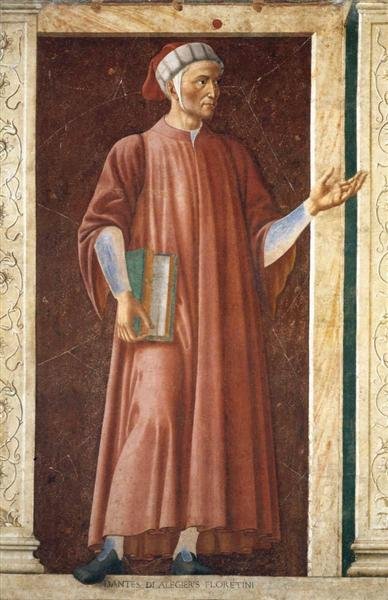The literary movement of the 13th century in Italy - "the sweet new style" /part 7/
In the program, "One Woman Asks Me" , the first one takes a theme from Guido Guinigelli's poetry and develops it through sophisticated syllogisms. He unfolds, in two poles but complementing the register, the subject of love - love-ecstasy to the angel-woman and the love-grief that arises from the inability to find a real reincarnation of the ideal-born love in the mind. The most important contribution to the final stage of the evolution of "the sweet new style" is undoubtedly that of Guido Cavalcanti.
It is precisely that he brings to perfection the process of the interiorization of love by developing the motive for the power of the loved woman to make the blissful man to whom he gives his heart. In the circle of friends and followers of Guido Cavalcantin, a greater emphasis is needed on the individual's internal capabilities and activities of the human organism. Through their detailed description the poetic stylists of this generation build more precisely their own individual appearance and individualize to a higher degree the radiance of the chosen beloved. In the love drama, the soul and mind, the eyes and the spirits inhabiting the body are already involved, in which, according to the conventions of medieval spiritualism / spirituality / mythology, the moral commitments and the sensual impulses placed in man are specified. In fact, even during the initial stage of the development of poetry of "the sweet new style", it is very important to "look at yourself", that is, of introspective analysis. This explains the preference given by the stylists of the "landscape to the soul" to the outer natural landscape in their poetry, which is more metaphysical and psychological than directed to the reproduction of the sensed world.
This preference, in general, predetermines the abstract suggestion of the "stylistic" lyric, its quest for quintessence, which makes it seem to predetermine the latest experiments in modern poetry, whose purpose is ultimately to find the exact match between the lyrical expression and the short-lived gusts , born in a capricious love experience. A new, more mature stage in the development of psychological analysis is found in the poetry of the late stylist Cino of Pistoia. With it, it becomes more specific and more articulated, the urge to achieve formal sophistication as if it is giving way to the enthusiasm of the loved one to confess to the end without hiding anything. This striving marks a crisis in medieval lyricism and preaches the transition to Petralka's lyrical strategy as a poet of love. It is assumed that the Tuscan poets find a new direction in the development of European lyricism, which is largely followed by the Petracians (XVI century) to the poets of the Romantics (the first half of the 19th century) - a direction in which the dynamic combination the lofty gusts and the egoistic attitudes in love passion. The innovation of stylists is conditioned by their conscious quest for an elevated earthly reality, determined by their transfer to an exquisite ideal world, in which each concept and every word acquires a spiritual, purifying from all earthly meaning. In this above-ground reality, in this perfect world, feelings develop in an atmosphere of purification from all kinds of lusts and flesh, in an environment free of sensual thoughts and bodily disturbances.

I think that to this day they do it.
I love those two aspects between the love and the disappointment
The themes of literary movement of that time majorly revolved around Love and jealousy. But gradually, things changed. This is a remembrance.
Hi @godflesh What is in stylist writers' songs is actually based on psychological and naturalistic behavior. Thanks great post